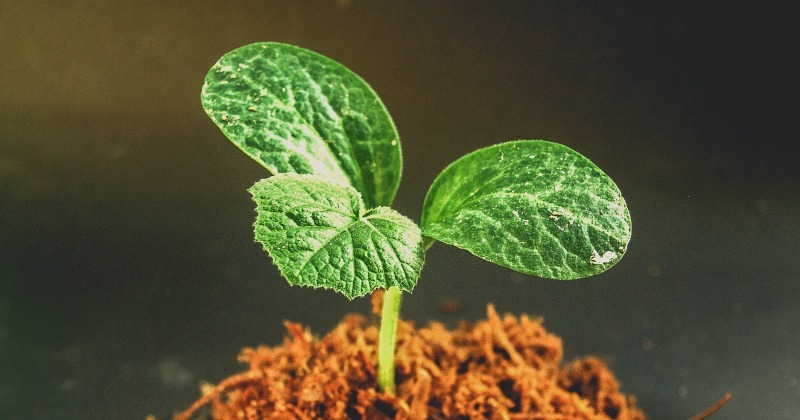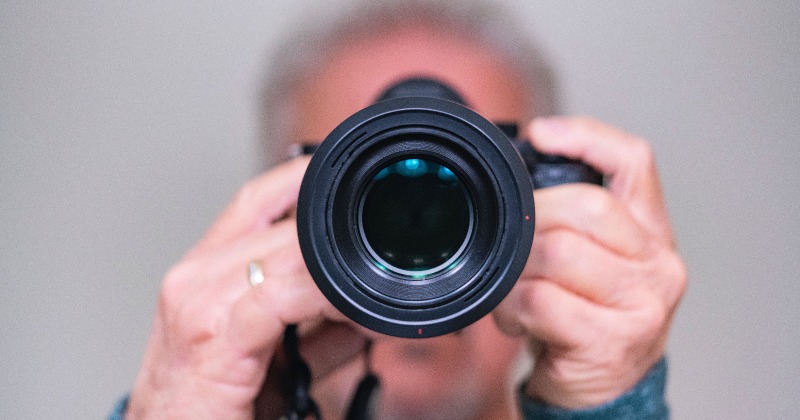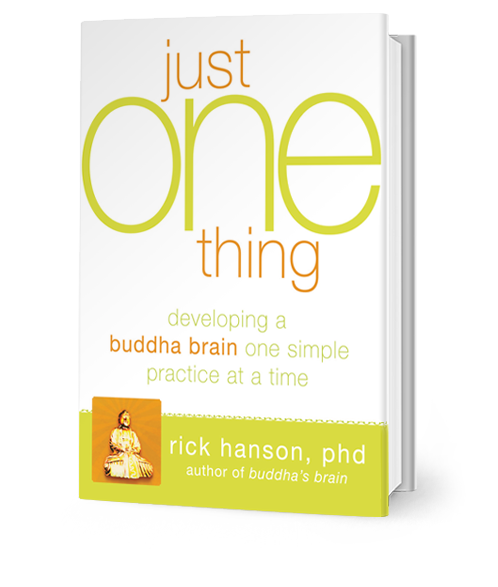RESOURCES TO GROW INNER STRENGTHS FOR
Motivation and Effectiveness
The drive to produce and succeed can leave us feeling strung out.
Often the energy it takes to aim high, work hard, and push towards our goals can have negative side-effects, such as feeling edgy, irritable, or even apathetic.
We can learn to realize our dreams and aspirations without getting uptight or attached to the results. Healthy motivation comes from identifying, honoring, and supporting our wholesome desires – and pursuing them with wholesome means.
FREE VIDEOS
How to Develop Healthy Motivation
FREE READS
Simple Practices for Developing Motivation
Being Well Podcast Episodes
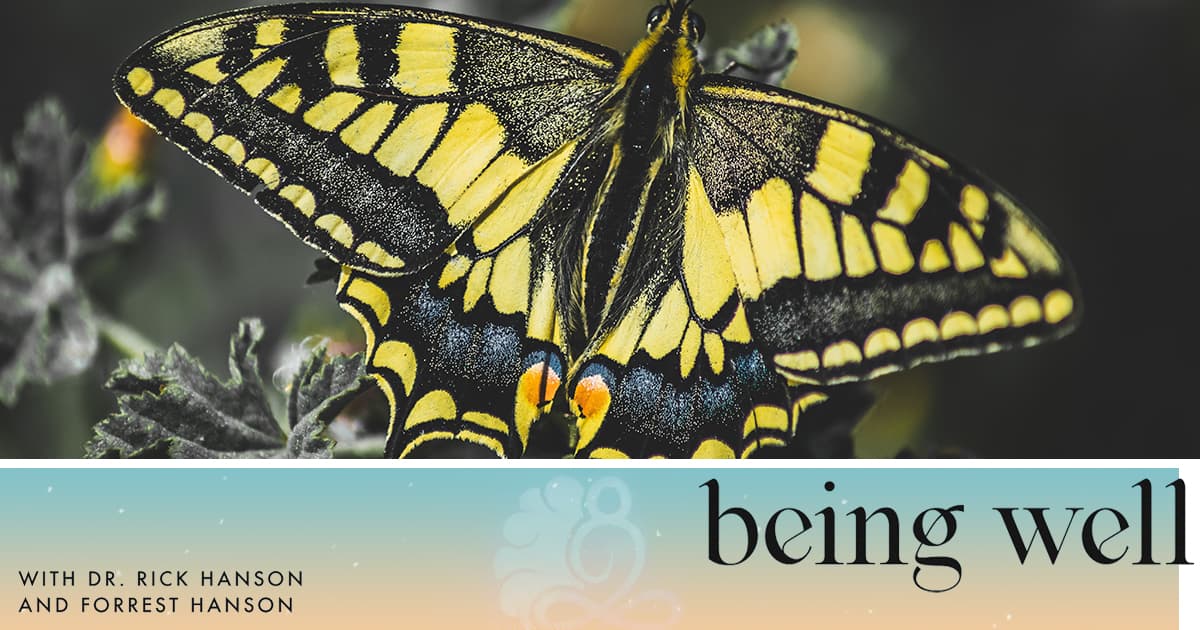
Being Well Podcast: How to Become a NEW Person
Learn how to step out of the way you’ve been previously, and into a new way of thinking, doing, and being.
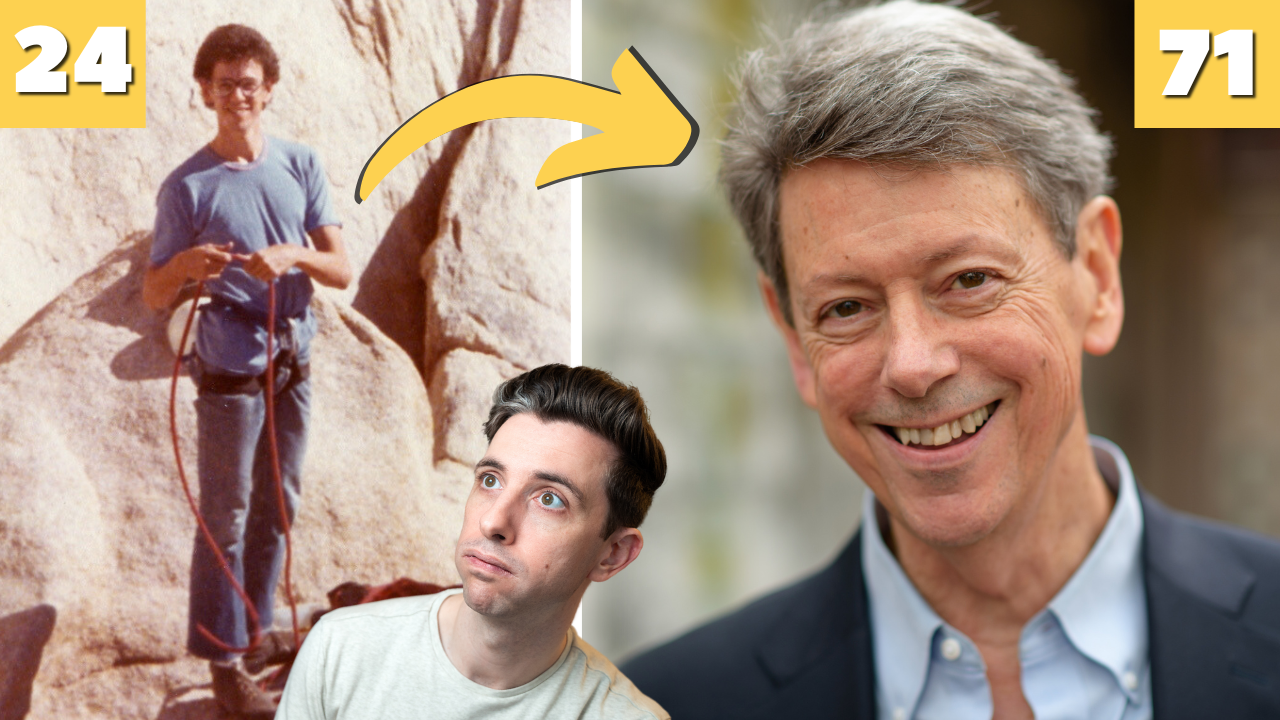
Being Well Podcast: Things We Wish We Knew in Our 20s
On today’s episode of the Being Well Podcast, Dr. Rick and Forrest share (roughly) 10 things they wish they’d known in their 20s.
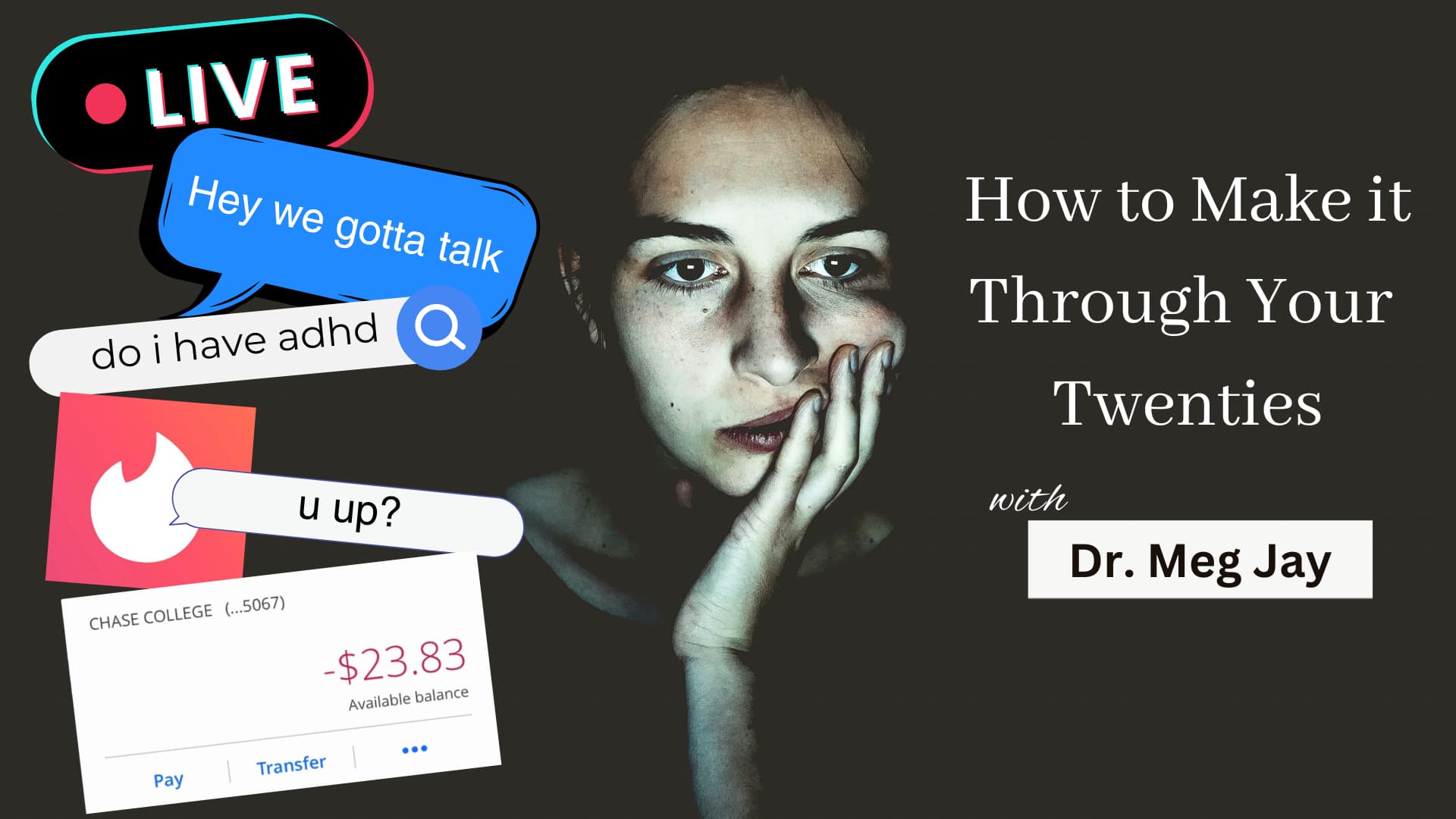
Being Well Podcast: How to Make the Most of Your 20s with Dr. Meg Jay
Dr. Meg Jay, a specialist on what she calls the “defining decade,” joins Forrest to explore how we can make the most of our 20s.
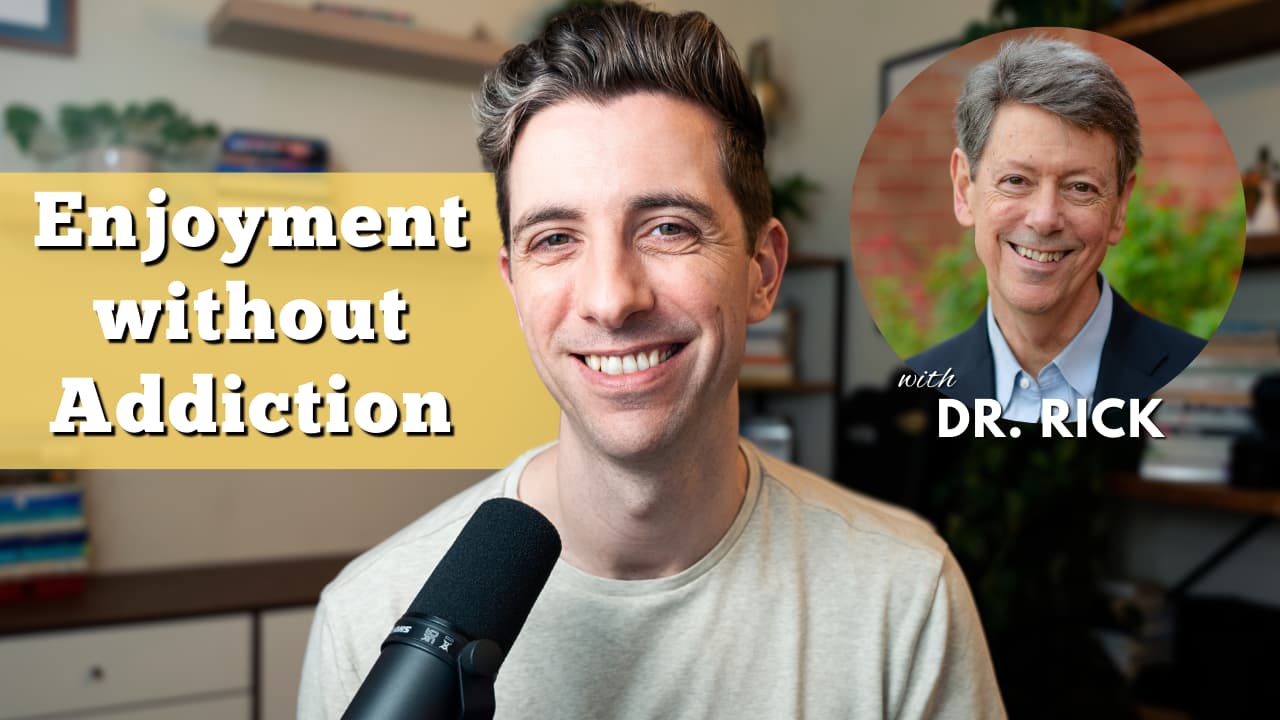
Being Well Podcast: The (real) Secret to Happiness: Attachment, Craving, and Enjoying Life
Forrest and Dr. Rick focus on the secret to everyday happiness: learning how to like without wanting.
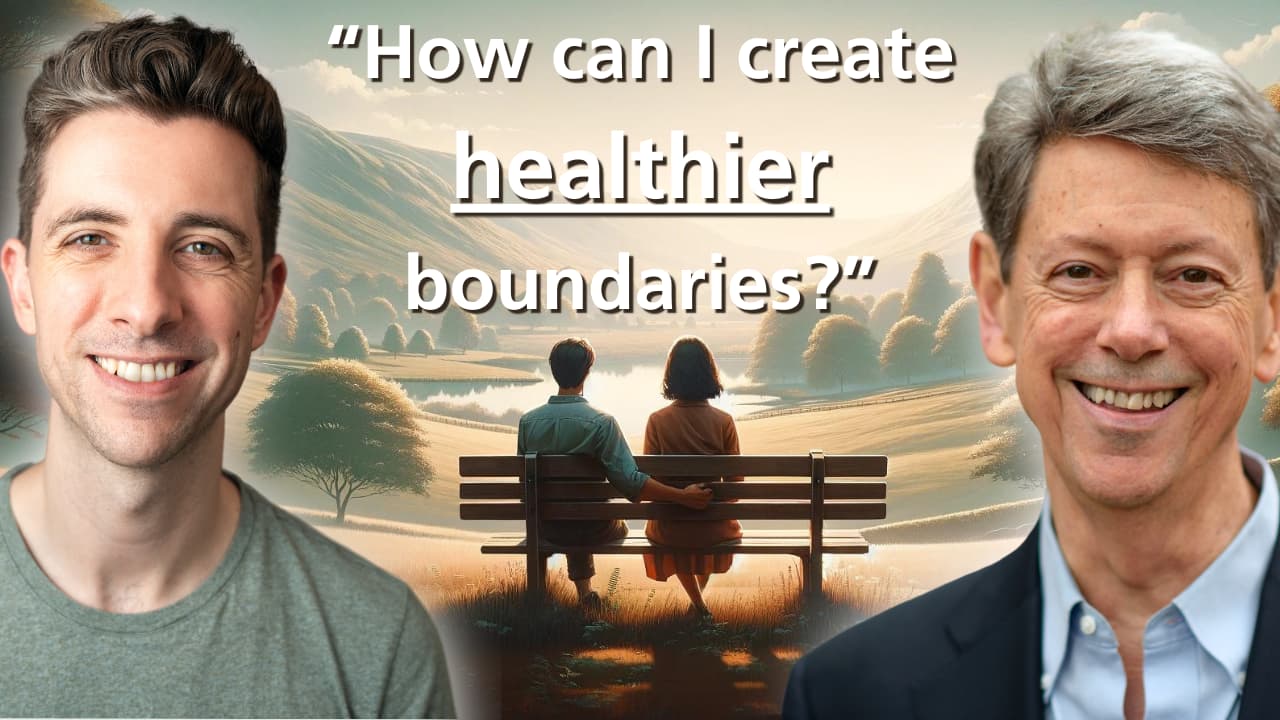
Being Well Podcast: Working with Irrational Fears, Setting Healthy Boundaries, and Understanding Therapy: March Mailbag
Forrest and Dr. Rick open up the mailbag and answer questions about working with irrational fears, creating separation from our thoughts and feelings, and setting healthy boundaries in dysfunctional families.
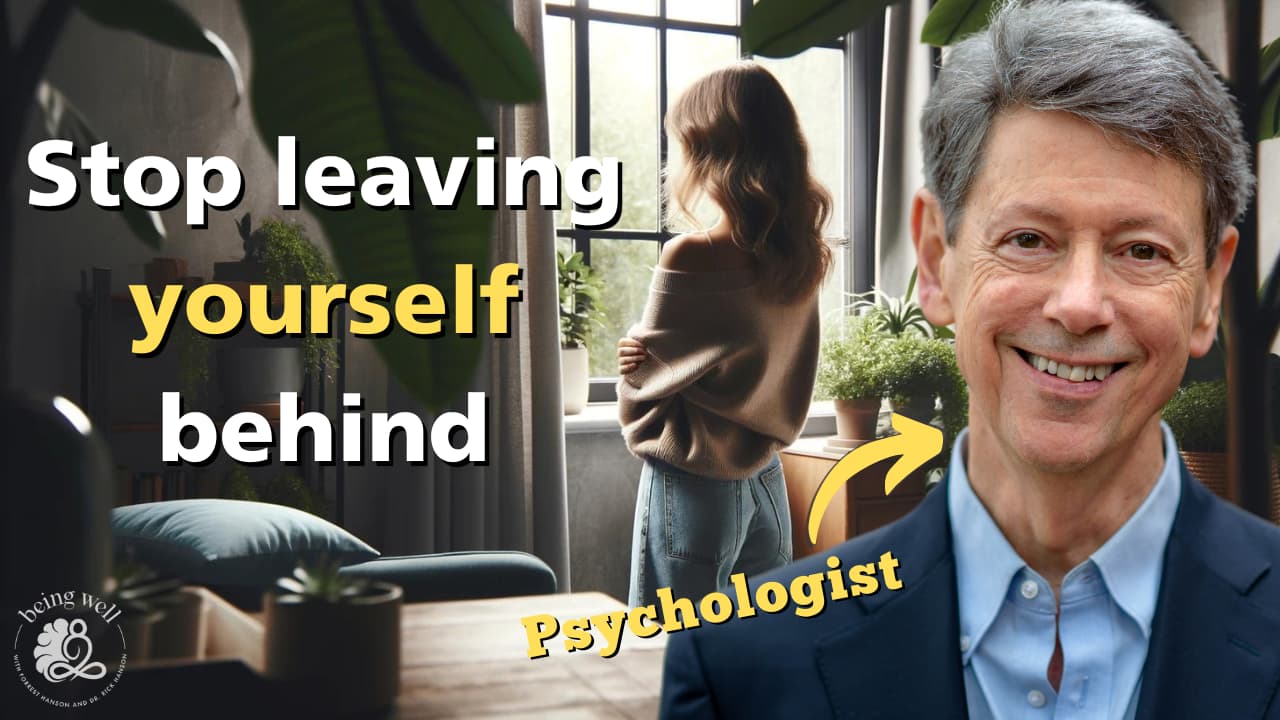
Being Well Podcast: Healing Self-Abandonment: Anxious Attachment, Healthy Boundaries, and Creating Strong Relationships
On today’s episode, Dr. Rick and Forrest explore self-abandonment, including anxious attachment, healthy boundaries, and creating strong relationships.
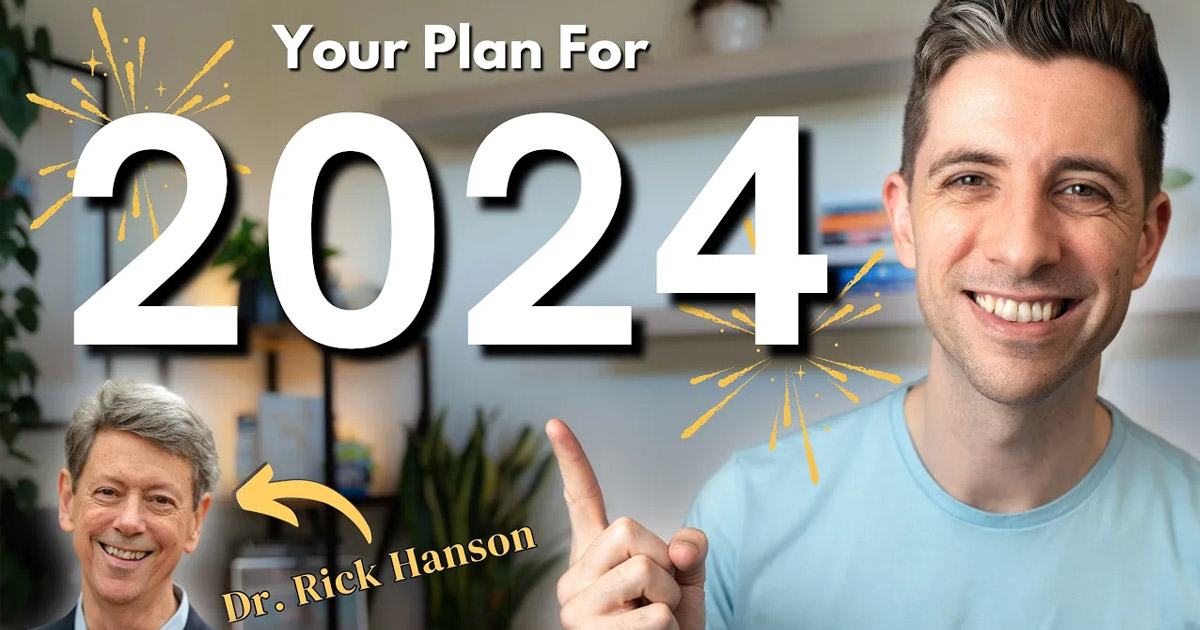
Being Well Podcast: Getting More From 2024
Dr. Rick Hanson and Forrest kick off the new year by exploring how we can relate to the past, plan for the future, and get more from 2024.
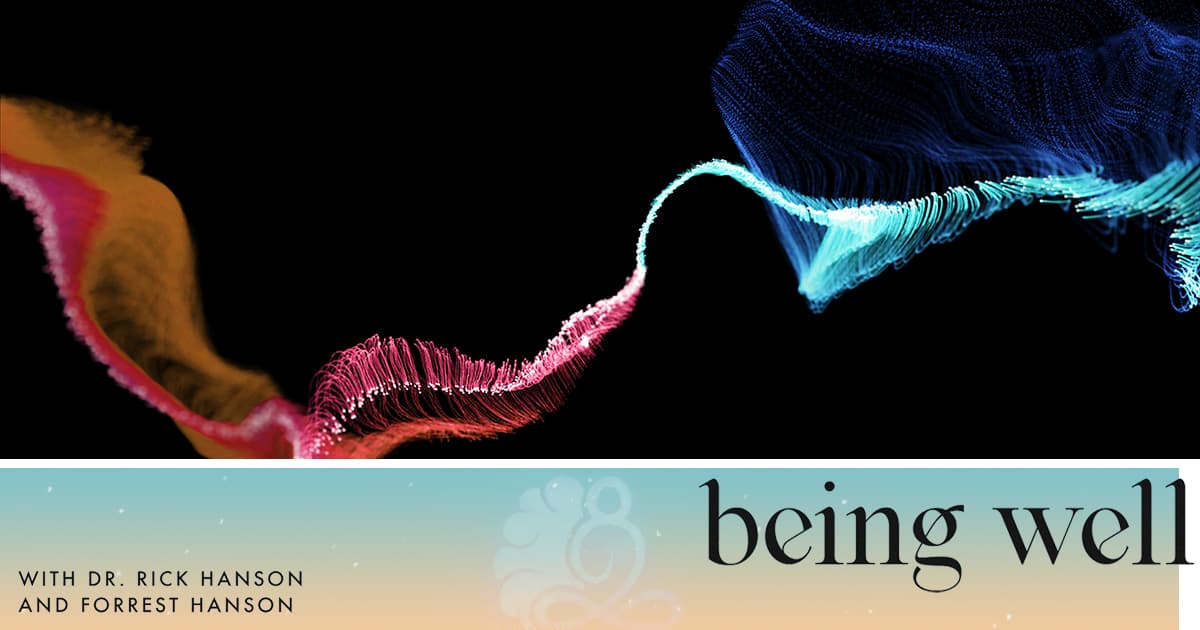
Being Well Podcast: Harnessing Your Generativity: The Secret to Productivity, Creativity, and Consistency
Dr. Rick joins Forrest for a deep dive into harnessing our natural generativity. How can we become more productive and creative, experience greater satisfaction, and lean into our biological drives to get more of what we want out of life?
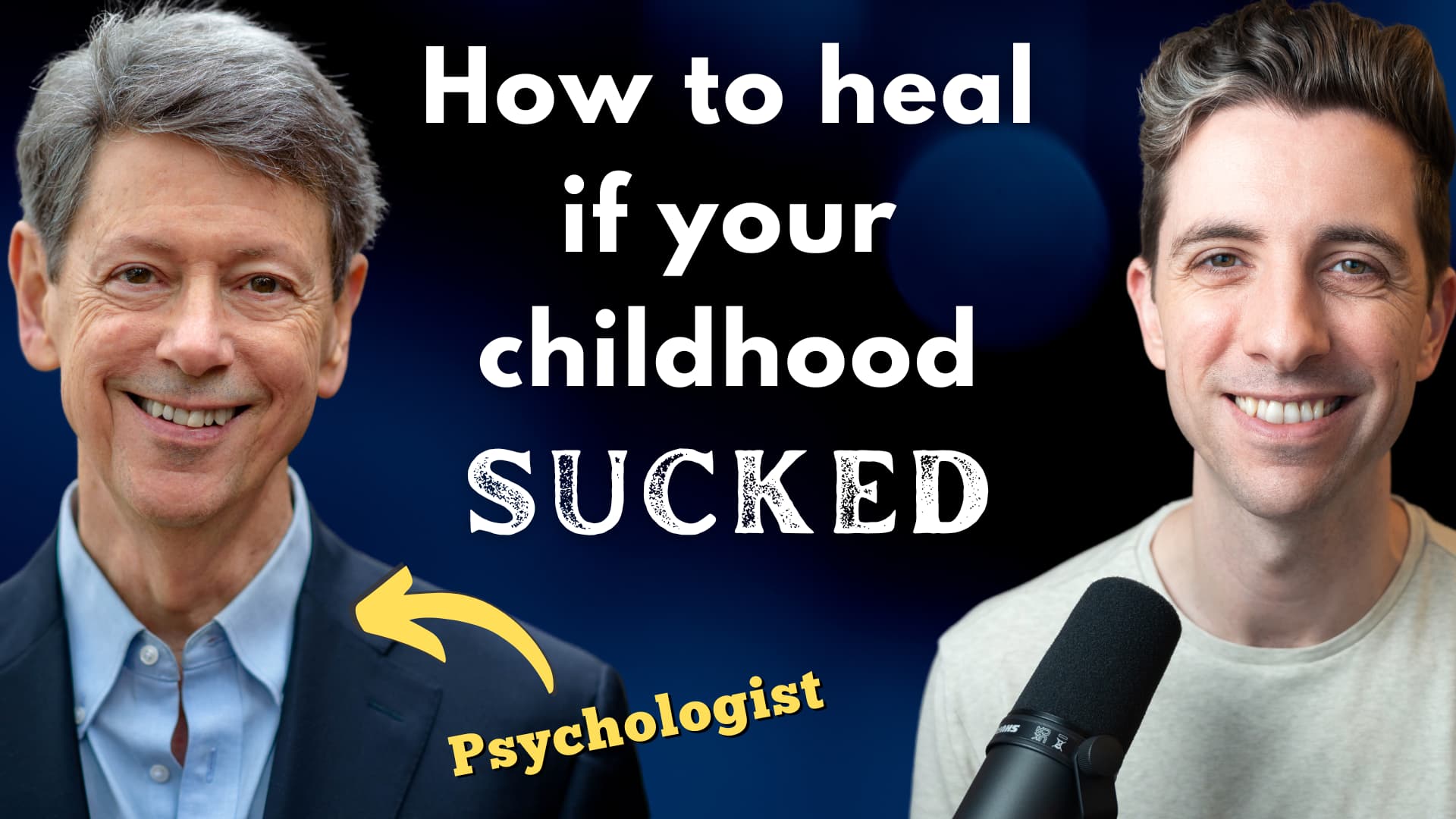
Being Well Podcast: Recovering from a Challenging Childhood
Recovering from a challenging childhood as an adult can be a difficult process, which is what we explore on this episode.
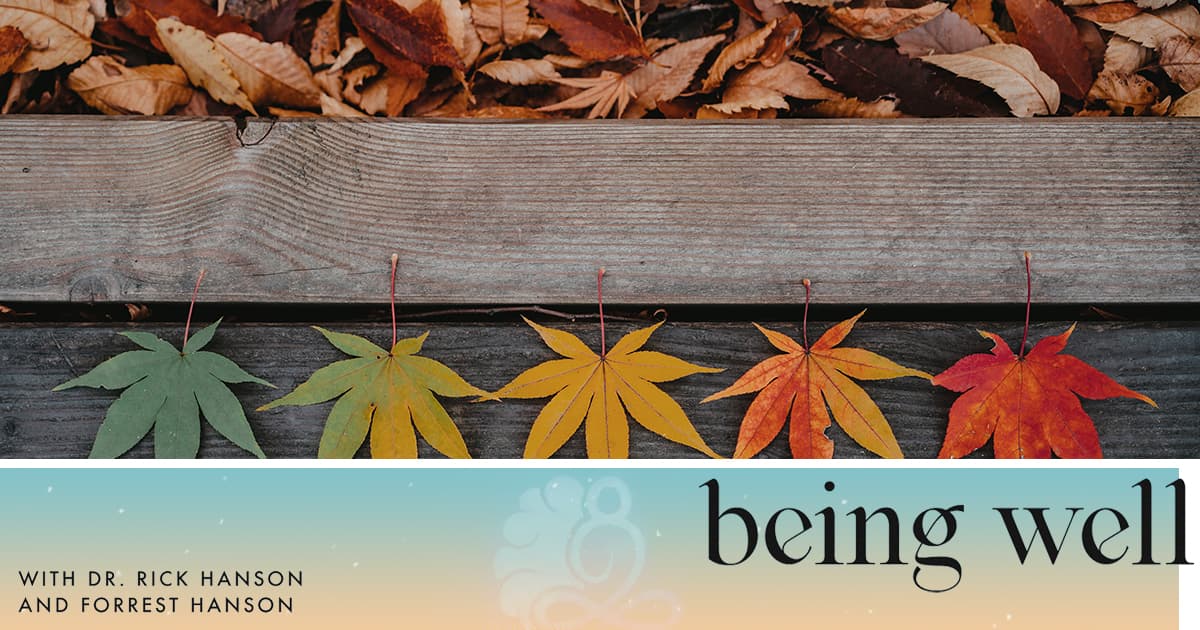
Being Well Podcast: Mastering Change with Brad Stulberg
Brad Stulberg joins Forrest to explore how we can reshape who we are, navigate and embrace change, and become more resilient.
Online Course
Change Your Mind
How to Have More Thoughts That Help and Fewer That Hurt
Our thoughts drive our feelings and reactions. You can learn how to step out of old assumptions and attitudes – and step into useful, hopeful thoughts about yourself and others.

Frequently Asked Questions

Psychologist and Author Dr. Rick Hanson answers questions about
Motivation
In considering the question of how much control we have over our own happiness, I was disappointed to learn 50% is genetics. How do we change genetics?
You are asking a deep important question, one at the heart of the “nature vs. nurture” debates over the centuries.
It’s really hard to tease apart two kinds of influences in our life: those we inherit, baked into DNA, and everything else. The exact balance depends on the individual person, but on average about a third, not half, of the variation in the population of psychological characteristics such as happiness is due to heritable factors…while everything else is up for grabs, a combination of external factors such as other people, social class, and good healthcare, and internal factors such as determination, mindfulness, and love.
In a nutshell, about two-thirds of what shapes a person’s experience of living is up to us, collectively and individually. Which for me is really good news…and calls us to responsibility, both in terms of how we make our society together and in how we chart our own individual lives. It’s hopeful! And this truth of things focuses us on doing all that we can with what is under our own influence, no matter what plusses or minuses we inherited from our grandparents.
Why is it important to know about the Responsive and Reactive settings of the brain?
Taking in the good is a foundational practice that compensates for the brain’s preferential encoding of negative experiences and builds inner resources. More fundamentally, I am interested in naturalizing Buddhist psychology in a frame of evolutionary neuropsychology and operationalizing states and factors of non-craving (broadly defined in the Buddhist sense) in neuropsychological terms.
I’m using a conceptual framework that draws on polyvagal theory, Higgins work on promotion/prevention, and other work to posit three core motivational systems in the brain – Avoiding harms, Approaching rewards, and Attaching to others – which have two primary “settings.”
When a person experiences that his or her core needs are met for safety, satisfaction, and connection (tracking the three motivational systems), the related system tends to default to its Responsive setting, in which there is little or no basis for craving in that system; in this state, the body refuels and repairs itself and the mind rests in a basic sense of peace, contentment, and love (again, tracking the systems).
On the other hand, when the person experiences that one or more core needs are not being met, the related system shifts into its Reactive setting, there’s a fight-flight-freeze stress response cascade, the body burns resources, and the mind shifts into a basic sense of “hatred,” “greed,” and heartache (using two of the traditional Buddhist mental “poisons” in broad terms and tracking the three motivational systems).
While Reactive bursts can be adaptive, especially under the conditions in which our ancestors evolved, chronic Reactive states create significant allostatic load as well as a lot of unnecessary anxiety, irritation, frustration, drivenness, envy, interpersonal disturbances, and shame. Consequently, repeatedly taking in the good both down-regulates Reactivity and increases Responsivity in the moment plus gradually internalizes a felt sense of needs met as well as inner resources that together help stabilize a person in the Responsive mode even during challenging conditions, thus over time undoing many of the underlying neuropsychological causes of craving and thus suffering (broadly defined).
Can you help shed more light on how we live "our Aspirations" whilst not being selfish?
Check out the Aspiration chapter in Resilient.
In brief, healthy aspirations take into account our duties to others . . . and to ourselves. To simplify, duties are “have to” while aspirations are “want to.” Also check out Mother Nurture and my writings about sharing the load fairly when kids come along.
This said, in many people’s lives (though sadly and often unjustly, there are many exceptions), after handling duties there is still attention and time and often other resources available for personal aspirations – especially when we consider the power of many little moments of practice, and the power of relatively small amounts of time each day – 15 minutes? an hour? – that really add up over months and years.
How could you measure clinical interventions that encourage new cell growth and happiness?
This question gets at the remarkable fact under our noses all day long: our ineffable thoughts and feelings are making concrete, physical, lasting changes in the structure and function of our brains. Neurons that fire together, wire together. This is learning, including the emotional, motivational, attitudinal and skills learning that is our focus in therapy. In other words, the making of memory – especially implicit memory, the storehouse of emotional residues of lived experience, knowing “how to,” expectations, assumptions, models of relationship, etc. distinct from explicit memory, the much smaller storehouse of specific recollections and knowing “about” – the gradual change of the structure and function of the brain.
In this context, any kind of mental change is evidence of neural change. Since neuroscience is a baby science, our current, noninvasive, imaging technologies have limited capacities to measure neural change in human beings – especially given how physically fine, fast, and complex these changes are. You could put five of the cell bodies of a typical neuron side by side in the width of just one of your hairs, and five thousand of the synapses, the connections, between neurons in the width of just one hair.
Nonetheless, even though the ethics of animal research trouble and even alarm many, including me, it is the case that more invasive research on animal learning – including emotional, motivational learning, that has some parallels to therapy – has established many fine-grained details of the ways in which experiences of stress, frustration, and trauma, as well as experiences of caring, success, and safety change the nervous system.
So we presume that neural change must be occurring if there is mental change. In this light, there are now many studies with human beings that show structural and functional changes after interventions such as training in mindfulness, compassion, body awareness, and psychotherapy. The cortex – the outer shell or “skin” of the brain – gets measurably thicker due to new synapses and greater infusion by capillaries for blood flow; key regions are more readily activated; there is also greater connectivity between regions, so they are more integrated and work better together; there are even changes in the expression of genes – tiny strips of atoms in the twisted up molecules of DNA in the nuclei of neurons.
And as your mind changes your brain for the better, these changes in your brain feed back to change your mind for the better as well. As these positive structural and functional changes in the brain occur, people become more capable and happy. For instance, training in mindfulness increases activation in the left prefrontal cortex, which supports a more positive mood.
As to new cell growth, I assume this is a reference to neurogenesis, the birth of new baby neurons, primarily in the hippocampus. We can encourage the birth of these neurons through exercise, and encourage their survival and wiring into memory networks through engaging in complexity and stimulation.
Here’s the takeaway: we can be confident in our own lives, and in our work with clients, that our efforts are bearing fruit in actual, physical changes in the nervous system. And since motivation is one of the primary factors shaping outcome in psychotherapy – and in life as a whole – this is heartening, wonderful news.
Your idea about achieving happiness is to fill your implicit memory with good experiences rather than negative ones. Have I got that right?
Filling implicit memory with good experiences is one way to achieve greater happiness – and to help heal old pain and increase resources for coping. Other ways to accomplish these ends include increasing mindfulness, releasing negative beliefs and feelings, learning to activate the parasympathetic nervous system, and taking constructive action. That said, taking in the good is really important, both on general grounds and to compensate for the brain’s innate negativity bias.
Does having an implicit memory full of positive experiences make you less dependent on day-to-day or moment-to-moment events for your happiness?
Exactly right!
People who have not internalized positive experiences and other resources are dependent upon the outside world for the provision of them – or they get stoic or defended and deny their need for such experiences. This is a mistake since they are a universal, human need, as well as the basis for coping and for the strength of mind and heart it takes to stick up for those we love and make this world a better place.
But if you do take in positive experiences – particularly the ones that are key resources for a history of lacks or wounds (e.g., current experiences of feeling cared about are critically important for healing old experiences of abandonment, rejection, dismissal, loneliness) – then you fill up your own cup and become less dependent on external conditions; in effect, your happiness becomes increasingly unconditional.
Why pursue happiness practices like the ones you suggest rather than pouring 100% of one’s energy into work that saves/elongates lives?
My small answer to your big question is in three parts. First, it is of course not either-or, one can both pursue mental interventions that increase mental health while also pursuing physical interventions that increase physical health. Second, happiness practices and other mental interventions are very effective in increasing physical health, in terms of addressing the stress and lifestyle factors that are a major source of disease burden, especially in the developed world. Third, mental interventions are good for physicians and other healthcare providers themselves, in terms of improving decision-making and reducing burnout.
How do I reconcile awareness of suffering with a feeling of well-being?
First, I try to develop my capacity to sit in both compassion and equanimity, opening the heart to pain while also being undisturbed in my core about it. A long-term project in my case, to be sure!
Second, I try to see the whole mosaic of reality, which includes both beings that will be harmed and beings that will be loved. Recognizing the good (using that word loosely) does not mean not recognizing and feeling moved by the bad; and seeing the good can help us bear and sometimes improve the bad.
Is there a basic first step to break the patterns we have in life?
The first step is always self-awareness; without it, we’re flying blind. Try to step back in your mind and observe your reactions without being swept away by them.
Then bring compassion – the simple wish that a being not suffer – to yourself. Researchers have found that self-compassion builds resilience and well-being, plus it helps us treat others better; many studies have shown that people are more able and willing to be patient, reasonable, and kind when their own cup runneth over.
I also like to try to help myself feel the rewards that will come to me from breaking my patterns and acting more skillfully in the future. This helps incline my brain in that direction – sort of like the proverbial rider dangling a carrot in front of a donkey.
What role does gratitude play in developing a “Buddha brain” and why?
A “Buddha brain” is one that knows how to be deeply happy, loving, and wise. We develop ourselves in this way by cultivating wholesome qualities and uprooting unwholesome ones. In a sense, we plant flowers and pull weeds in the garden of the mind – which means that we are gradually changing the brain for the better.
Gratitude is a powerful tool in this “garden” since what you rest your attention upon is what will shape your brain the most. That’s because “neurons that fire together, wire together.” Gratitude shifts your attention away from resentment, regret, and guilt – and therefore stops you from building up the neural substrates of these known factors of mental and physical health problems. Gratitude also focuses your awareness on positive things, simple good facts such as having enough water to drink, the laughter of children, the kindness of others, or the smell of an orange.
To reap the rewards of gratitude, rest your attention on a good fact, noticing details about it, staying with it for at least a few seconds in a row. Then allow a natural emotional response of gratitude to arise. Continue to pay attention to this feeling of gratitude for another few seconds – or even longer: it’s delicious! Taking these few extra seconds will help you weave gratitude into the fabric of your brain and your Self. And you can practice gratitude both on the fly, as you move through your day, and at specific occasions, such as at meals or just before bed.
What are the health benefits to thankfulness?
The mental and physical health benefits of gratitude are hot topics these days. Researchers have found that gratitude helps calm down the stress response – and this strengthens your immune system so you can better fight off colds this season. Gratitude also supports the neurochemistry of well-being, and protects against depression. It builds resilience, so we get less rattled by events and bounce back faster. And gratitude turns us toward others as we appreciate the people we care about, and this sense of connection and what’s called “social support” provides additional health benefits itself.
So every day this season, take your Vitamin G: gratitude!
Do you have any thoughts on the new technology coming out that uses self-administered neurofeedback to promote well-being?
Here are my general thoughts:
- I haven’t used these devices personally
- There is emerging scholarly and anecdotal evidence that they can be helpful.
- Some people seem to get a lot out of them, some a little, some not at all, and some are bothered by them. You basically don’t know which group you’re in unless you try them.
- I think of these devices pragmatically: are they helpful, but might they also crowd out more self-directed, inside-out training of the mind/brain system.
- I think these can be great if they are helpful, but long-term it’s good to be able to incline the mind/brain towards good states without external help.
The bottom-line is whether they work for a person, and you don’t know if it’ll work until you try it. Maybe check out one of these devices that a friend may have, if possible, before buying one.
Is the experience of peace and happiness synonymous with activating the parasympathetic wing of the nervous system? If so, what are the three most successful techniques for activating the PNS?
It’s a great question, since there is sometimes a misunderstanding of the nervous system that equates parasympathetic activation with positive states of being and sympathetic activation with negative states.
Yes, activating the parasympathetic nervous system (PNS) can foster the calming and easing that underlie many positive states of being. On the other hand, excessive PNS activation leads to the “freeze response” – in humans this is the equivalent of animals playing dead – which can feel like sleepiness, dissociation, inertness, numbing, tuning out, or shutting down, often accompanied by negative emotions such as dread or shame.
And yes, activating the sympathetic nervous system (SNS) can foster fight or flight states of being, often with associated negative emotions such as anger or fear. On the other hand, SNS activation combined with positive emotions such as eagerness, confidence, success, pleasure, affection, and gratification can foster wholesome actions such as cheering on your child in a race, making love, asserting yourself, dancing with your whole heart, or pursuing an ambition.
Overall, a balance of PNS and SNS activation is best. In a culture that prizes SNS activation (and which often stimulates negative emotions such as drivenness or envy), it is particularly important to be strong and skillful in PNS activation. And throughout, keep planting and nourishing seeds of positive emotions, thoughts, somatic states, and desires.
In terms of what activates the PNS, anything that helps you relax will do this. If you want three “go-tos” that I like myself, here they are:
- Exhaling
- Touching your lips
- Hugging someone you care about
Will you offer a few other suggestions for implementing your practices through the holidays and the New Year?
The old-fashioned saying that “practice makes perfect” is as true for one’s well-being or relationships, so pick just one thing to think about or do in your mind each day. Keep it simple. But stick with it. For example, drawing on a few practices in my book, Just One Thing:
- Notice that you truly are basically alright right now several times a day, which would help undo the anxious background murmur we inherited through evolution.
- Really enjoy your hands, drawing you into more intimate and sensual contact with things around you.
- “Fill the hole in your heart” by sensing that key positive experiences are sinking down into you and touching places of old lack or pain. For example, since I was a shy and nerdy kid who felt lonely and unwanted, I’ll deliberately sense that experiences these days of feeling included and valued are soothing and feeding the younger layers of my mind. Neurologically, this gradually infuses resources into old wounds, helping to heal them in the process.
- Take refuge a few times each day in one or more things that are sources of strength, refueling, or inspiration for you. Simply say to yourself, “I take refuge in _______ ,” or just get a feeling of being connected with this refuge, as if it you are already in it.
Whatever your practice is, take a moment to recognize its value for you. Keep bringing it to mind, at least once or twice a day. If you take care of your practice, it will take care of you.
What are some simple tips for practicing gratitude on Thanksgiving?
Keep bringing your attention back to simple good facts, such as having enough water to drink, the laughter of children, the kindness of others, or the smell of an orange. Rest your attention on this good fact, noticing details about it, staying with it for at least a few seconds in a row. Then allow a natural emotional response of thankfulness to arise. Continue to pay attention to this feeling of gratitude for another few seconds – or even longer: it’s delicious.
Taking these few extra seconds will help you weave gratitude into the fabric of your brain and your self. And you can practice thankfulness both on the fly, as you move through your day, and at specific occasions, such as at meals or just before bed.
How to you balance equanimity and cultivation?
To use the language of Buddhism there is a place for Right Mindfulness, but also a place for Right Effort. Mindfulness is the doorway to equanimity, which is gradually developed as virtue, concentration and wisdom deepen. Along this path, we also need to pull weeds and plant flowers in the garden of the mind: Right Effort, in other words. Cultivating wholesome states and factors of mind – by activating them, installing them through taking in the good, and then reactivating and reinstalling them again and again on life’s path, in a wonderful positive cycle – is a kindness to oneself and others.
With time, the fruits of this process of cultivation become increasingly second nature, woven into the fabric of the brain, the body, and them mind. Then conscious cultivation – Right Effort – gradually falls away and we abide without effort in spacious balanced peaceful beautiful equanimity.
What are the limitations of visualization and “harnessing the power of the mind” for health?
As a psychologist, I am not giving medical advice. In that context, as a general statement, it is clear that mental factors such as stress on the one hand and gratitude or feeling cared about on the other can play a significant role in a person’s health journey . . . much as purely physical factors such as infection or cancer or effective medications can play a significant role as well.
Speaking personally, I try to approach my own health issues on both levels, mental and physical, based on sensible and individualized methods that have reasonable evidence, including the evidence of whether they are actually producing results for me.
Additionally, as an individual choice, I also include what could be called the spiritual level, distinct from the natural processes within our big bang universe, which include our thoughts and feelings, hopes and dreams . . . as well as our organs and DNA. Others may not want to do this, and I respect that choice.
I have no problem with people who include the possibility of spiritual factors in their healing of a medical condition. I do think it is foolish to do this in a way that excludes or minimizes the role of the physical level in our healing. We have real bodies, they are full of real cells and molecules and microbes, and this physical stuff really matters, and modern medicine has many effective ways to deal with it. Sure, doctors can make mistakes, and we need to be aware of the financial incentives such as from pharmaceutical companies that tilt medical treatments toward certain approaches and away from others. I turn to doctors who listen carefully, don’t patronize, individualize their approach to me rather than “one size fits all,” and recognize the potential usefulness of complementary and holistic methods. But I would not want to use the spiritual level to crowd out sensible, standard medical interventions.
Can we change implicit memory with positive experiences, or is explicit memory the only type of memory that is changeable?
Broadly, memory is the totality of information acquired by an individual over their lifetime that is represented by their nervous system (and supported by other changes in the musculoskeletal system [somatic markers], cardiovascular system, GI system, etc.)
That information can be loosely categorized into two groups:
Explicit memory – personal recollections, knowledge about (this is sometimes called semantic memory)
Implicit memory – emotional residues of lived experience, background assumptions and expectations, knowledge how to (also called procedural memory), habits, inclinations, models of relationships, behavioral “scripts” with other people, global sense of self, underlying inclinations of mood, etc., etc.
Most of the contents of both kinds of memory are outside of awareness until we access them. Implicit memory is accessible with mindful investigation; it is not inherently unconscious.
My focus is on implicit memory since that is the vaster warehouse of all that we are.
There is a negativity bias in learning that affects both explicit and implicit memory.
There are two reasons to value beneficial experiences and their internalization: this is the primary way to grow the inner strengths we need in life, and this corrects and compensates for the negativity bias of the brain. These two reasons apply to both explicit and implicit memory.
Additional Resources on Motivation
Talks
Cultivating Wholesome Motivation
Interview with Paul Gilbert on Confidence
Videos
The Benefits of Exercise: Rick Hanson Interview with John Ratey
From Many to Many: Forming the Compassionate Groups That Can Save the World
Gratitude is Important When You Have a Tough Life
Honoring the Deepest Wants in Yourself and Others
Making Efforts: The Third Factor of Awakening


